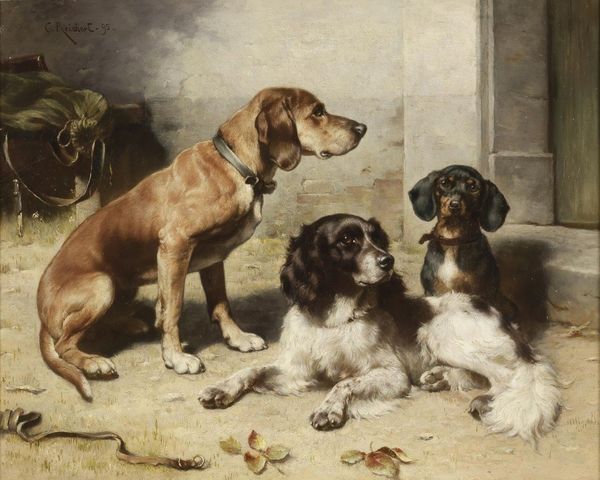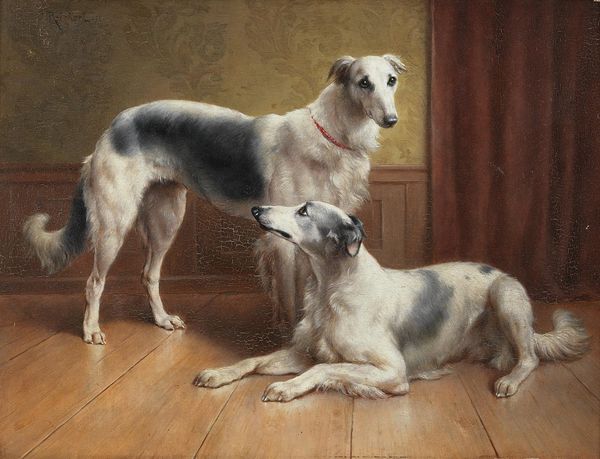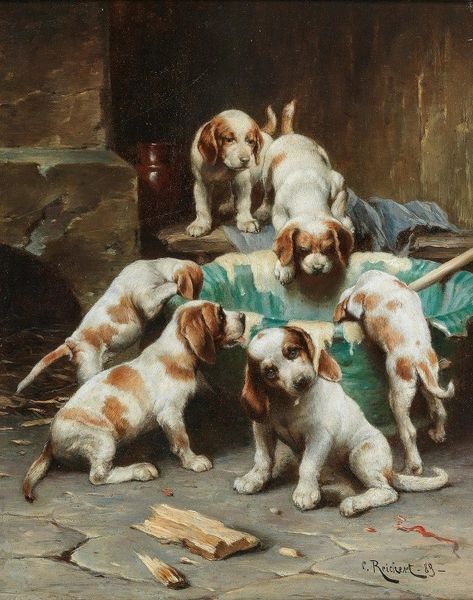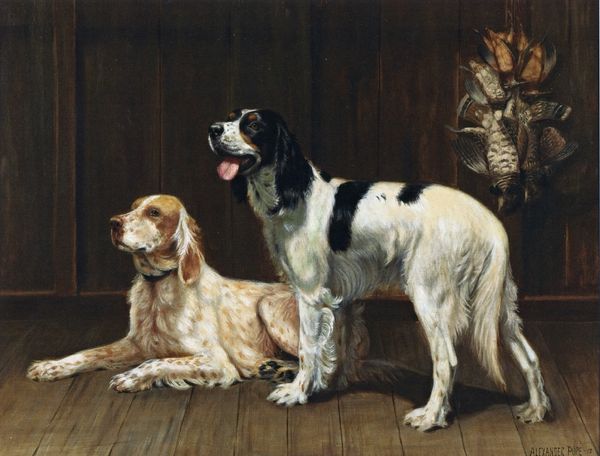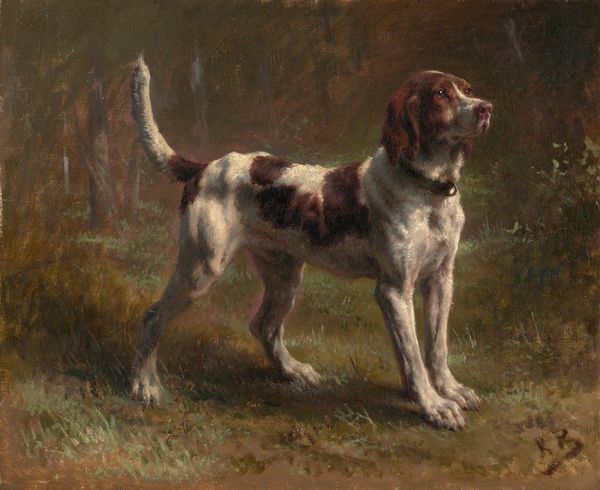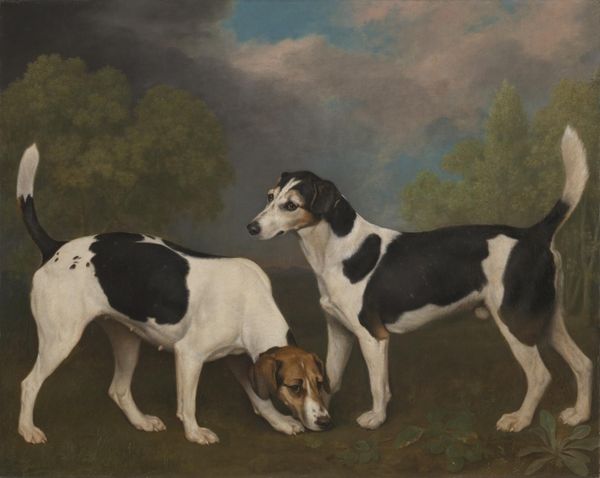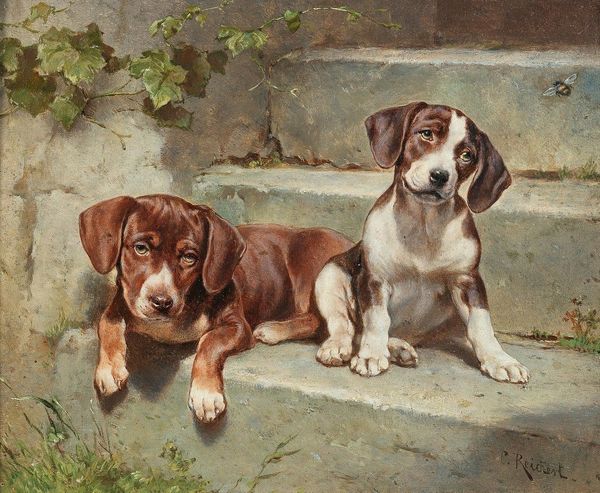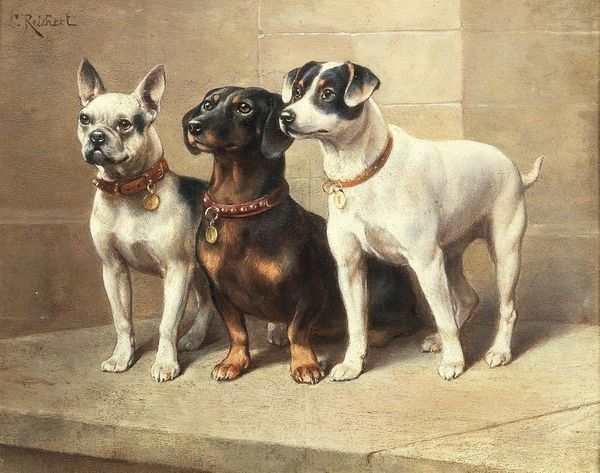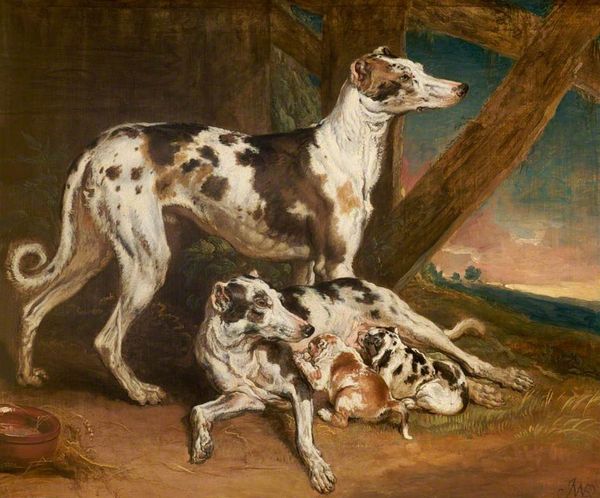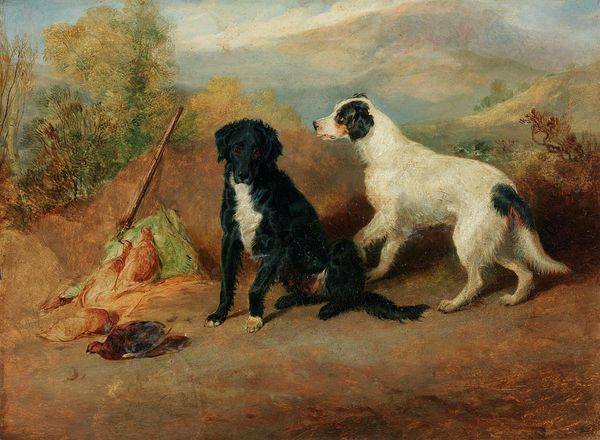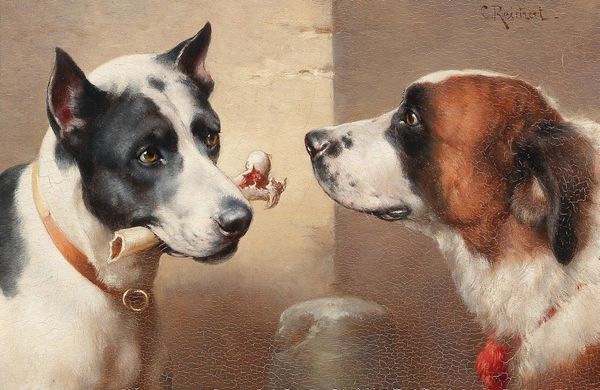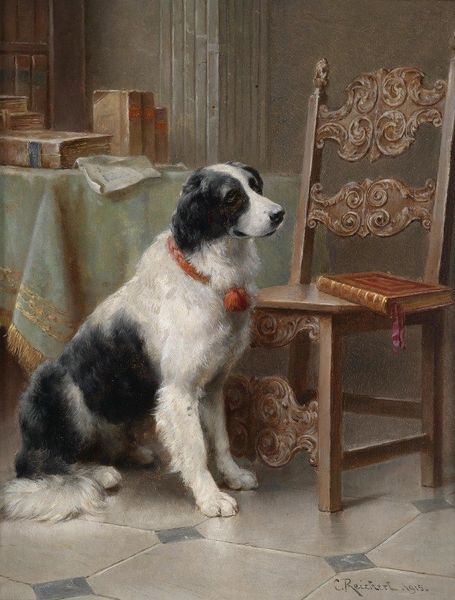
painting, oil-paint
#
painting
#
oil-paint
#
landscape
#
figuration
#
oil painting
#
genre-painting
#
realism
Copyright: Public Domain: Artvee
Editor: Here we have Carl Reichert’s “Drei Hunde,” painted in 1906 using oil on canvas. It depicts three dogs of differing sizes and breeds, set in an outdoor scene. There's a beautiful realism here, especially in the rendering of the dogs’ fur and expressions. I’m immediately struck by the sense of interaction between these animals, or maybe potential tension, given their disparate sizes. What do you see in this piece? Curator: Ah, "Drei Hunde"... a delightful tableau of canine companionship, or perhaps something more complex! Look at the textures, the almost tactile quality Reichert coaxes from the oil paint. For me, it’s a meditation on societal dynamics – the 'big dogs' seemingly oblivious, and the 'little dog' making his presence known. Makes you wonder, doesn't it, about power, about who gets heard, and the silent languages of the animal world…or human world perhaps. Editor: That’s interesting. I was focusing more on the dogs as individuals, but the idea of societal power dynamics is thought-provoking. So the size difference, that's not accidental then? Curator: Oh, accident? In art, my dear, the best "accidents" are intentional! Reichert gives us such detail; a world to explore beyond simple depiction. Do you notice how each animal gazes towards different points beyond the canvas edge? What silent command structures or long forgotten histories dictate those gazes? What if it's a metaphor? What do the animals symbolise about different parts of society perhaps? Editor: I hadn’t thought of it like that, seeing them more as archetypes. Thanks for a deeper dive! Curator: It’s just a jumping-off point, a place to let your mind, and your eye wander and feel! Isn’t that the greatest joy of art – to prompt a conversation with ourselves, the work, and others!
Comments
No comments
Be the first to comment and join the conversation on the ultimate creative platform.
